
The Foshay Tower, now the W Minneapolis – The Foshay hotel, is a skyscraper in Minneapolis, Minnesota. Modeled after the Washington Monument, the building was completed in 1929, months before the stock market crash in October of that year. It has 32 floors and stands 447 feet (136 m) high, plus an antenna mast that extends the total height of the structure to 607 feet (185 m). The building, which was added to the National Register of Historic Places in 1978, is an example of Art Deco architecture. Its address is 821 Marquette Avenue, although it is set well back from the street and is actually closer to 9th Street than Marquette.

The New York Cancer Hospital (NYCH) in the Upper West Side of Manhattan, New York City was a cancer treatment and research institution founded in 1884. The building was located at 455 Central Park West between West 105th and 106th Streets, and built between 1884 and 1886 with additions made between 1889 and 1890; it was designed by Charles Coolidge Haight in the Late Gothic and French Chateau styles – inspired by the chateaux of the Loire Valley. It was the first hospital in the United States dedicated specifically for the treatment of cancer, and the second in the world after the London Cancer Hospital. After outgrowing the original building and moving, it became what is today known as Memorial Sloan-Kettering Cancer Center.
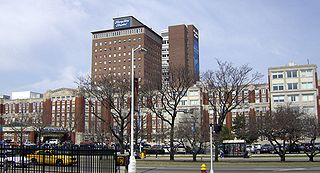
Henry Ford Hospital (HFH) is an 877-bed tertiary care hospital, education and research complex at the western edge of the New Center area in Detroit, Michigan. The flagship facility for the Henry Ford Health System, it was one of the first hospitals in the United States to use a standard fee schedule and favor private or semi-private rooms over large wards. It was the first hospital in the country to form a closed, salaried medical staff. As founder Henry Ford viewed tobacco as being unhealthy, the hospital was one of the first in the United States to institute a total ban on smoking. Henry Ford Hospital is staffed by the Henry Ford Medical Group, one of the nation's largest and oldest group practices with 1,200 physicians in more than 40 specialties.

The Utica Psychiatric Center, also known as Utica State Hospital, opened in Utica on January 16, 1843. It was New York's first state-run facility designed to care for the mentally ill, and one of the first such institutions in the United States. It was originally called the New York State Lunatic Asylum at Utica. The Greek Revival structure was designed by Captain William Clarke and its construction was funded by the state and by contributions from Utica residents.

The Midtown Exchange is a large commercial building located in the Midtown Phillips neighborhood, in Minneapolis, Minnesota, United States. It is the second-largest building in Minnesota in terms of leasable space, after the Mall of America. It was built in 1928 as a retail and mail-order catalog facility for Sears, which occupied it until 1994. It lay vacant until 2005, when it was transformed into multipurpose commercial space.
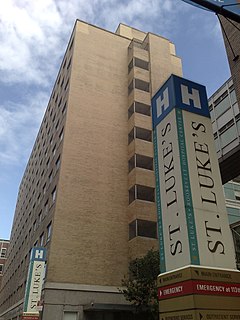
Mount Sinai Morningside, formerly known as Mount Sinai St. Luke's, is affiliated with the Icahn School of Medicine at Mount Sinai and the Mount Sinai Health System. Incorporated in 1850, it is located in the Morningside Heights neighborhood of Manhattan in New York City. The hospital is a teaching hospital and provider of general medical and surgical facilities, ambulatory care, and a Level 2 Trauma Center, verified by the American College of Surgeons. It is affiliated with the Icahn School of Medicine at Mount Sinai and the Mount Sinai Health System, a nonprofit hospital system formed by the merger of Continuum Health Partners and the Mount Sinai Medical Center in September 2013. From 1978 to 2020, it was affiliated with Mount Sinai West as part of St. Luke's–Roosevelt Hospital Center.
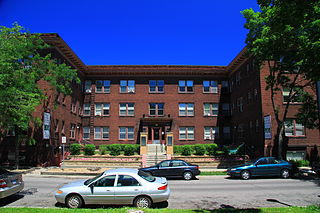
Stevens Square is the southernmost neighborhood of the Central community in Minneapolis. It is bordered on Lyndale Avenue on the west, Franklin Avenue on the south, and Interstates 94 and 35W on the north and east, respectively.

The Minneapolis Post Office is the central post office for the city of Minneapolis, Minnesota in the United States. Located on the west bank of the Mississippi River, the facility extends west to east from Hennepin Avenue Bridge to the Third Avenue Bridge and north to south from the West River Parkway on the Grand Rounds Scenic Byway to First Street. Its ZIP code is 55401.
McKay-Dee Hospital is a not-for-profit community focused health system operated by Intermountain Healthcare. It is located in Ogden, Utah, United States. With 310 licensed beds, it is the 3rd largest hospital in the Intermountain system, and the 4th largest Hospital in Utah. Although not directly affiliated with the university, it is located just southwest of the main campus of Weber State University.
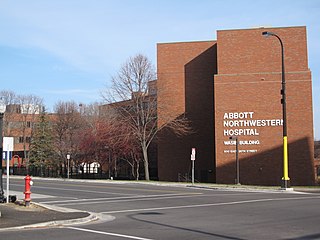
Abbott Northwestern Hospital is a 686-staffed bed teaching and specialty hospital based in Minneapolis, Minnesota. It is the largest not-for-profit hospital in the Twin Cities and a part of the Allina Health network of hospitals and clinics. U.S. News ranked Abbott Northwestern among America's Best Hospitals with six adult specialties ranked in the top 50 in the United States in 2008.

Eitel Hospital is a former hospital building in Minneapolis, Minnesota, located across from Loring Park. It is listed on the National Register of Historic Places. The building is a brick building primarily in the Classical Revival style, made plainer when its original cornice was removed.
Dunwoody Village is a non-profit Continuing Care Retirement Community located in Newtown Square, a western suburb of Philadelphia. The community is built on the grounds of an 83-acre (34 ha) campus that has a rich history of family ownership which reaches back to the time of the American Revolution.

St. Luke's Hospital was a former hospital building located on a bluff overlooking downtown Davenport, Iowa, United States. It is listed on the Davenport Register of Historic Properties and on the National Register of Historic Places. It has subsequently been torn down.

The Wilford H. Fawcett House is a house in Breezy Point, Minnesota, United States, listed on the National Register of Historic Places. Wilford H. Fawcett, also known as "Captain Billy", started the book "Captain Billy's Whiz Bang" as a joke book for soldiers during World War I. He formed Fawcett Publications in 1919 in Robbinsdale, Minnesota. In 1920, he bought a tract of land where the present-day Breezy Point Resort is located, and he began building cottages and a large log lodge. The lodge has since burnt down. He built the Fawcett House as a private residence within the resort property. Fawcett hired the Minneapolis architects of Magney and Tusler and commissioned the design in the Swiss Chateau style. The rustic log style was a bit ironic, since the local logging industry had declined before the resort was built. The house is located on a point on Breezy Point Bay on Big Pelican Lake. It has a "Y" shape. The center of the "Y" has a circular staircase leading to a "reading balcony" in the main hall. The building is constructed of peeled and trimmed Norway pine logs, with brown stain on the exterior and varnished on the interior. The center hall contains the "reading balcony", a large stone masonry fireplace, exposed logs for the rafter beams, and wrought iron fixtures. The remainder of the house has room for about 30 guests. In 1979, a fire damaged several rooms in the northwest wing, but the exterior was unharmed. While the interior has been modernized somewhat, it remains sympathetic to the original.

The Ellis Island Immigrant Hospital was a United States Public Health Service hospital on Ellis Island in New York Harbor, which operated from 1902 to 1951. The hospital is part of the Statue of Liberty National Monument. While the monument is managed by the National Park Service as part of the National Parks of New York Harbor office, the south side of Ellis Island, including the hospital, is managed by the non-profit Save Ellis Island Foundation and has been off-limits to the general public since its closing in 1954.

The Buzza Company Building in Minneapolis, Minnesota, United States, is a building listed on the National Register of Historic Places in 2012. The building was originally built in 1907 for the Self-Threading Needle Company. It was built by the Brayton Engineering Company at a cost of $55,000. In 1923 the Buzza Company, a maker of greeting cards, acquired the building. George Buzza remarked, "No sooner had we acquired our new building than we promptly outgrew it." The company built a $200,000 addition along Colfax Avenue, designed by local architects Magney & Tusler. They later built another addition, a five-story structure with a tower saying "BUZZA", at a cost of $150,000. The building was used as Buzza's greeting card design studio from 1923 through 1942, at which point declining sales forced the liquidation of the firm. It was then used by Minneapolis-Honeywell Regulator Company for World War II production.
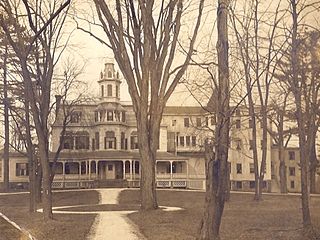
Interpines was a private hospital located in Goshen, New York, a village of three thousand inhabitants. Interpines was founded in 1890 by F. W. Seward Sr. and subsequently directed by his son until closing in 1959. The core of the sanitarium was a Victorian mansion, which together with surrounding gardens provided a unique environment for the residing patients.
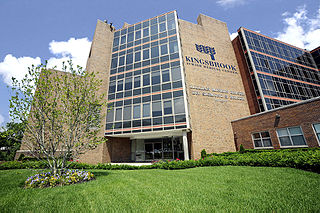
Kingsbrook Jewish Medical Center is a 303-bed full-service community teaching hospital with an estimated 2,100 full-time employees, located in the neighborhood of East Flatbush in Brooklyn, New York. The hospital is made up of a complex of eight conjoined buildings which are dispersed over a 366,000 square foot city block. It is currently under the network of Kingsbrook Healthcare System Corporation which, in addition to the hospital, comprises Rutland Nursing Home, containing 466 short and long term-care beds, Rutland Adult Day Healthcare Center, and its ancillary outpatient clinics. The hospital serves a diverse population from a wide range of ethnic backgrounds. Kingsbrook is accredited by the Joint Commission and is a non-for-profit member of both the Greater New York Hospital Association and the Healthcare Association of New York State. Kingsbrook provides ambulatory surgery, cardiology, critical care medicine, emergency/urgent care, gastroenterology, pulmonary, a ventilator dependent unit, wound care including hyperbaric chambers, diagnostic imaging including MRI and CT scanning, and an outpatient center.
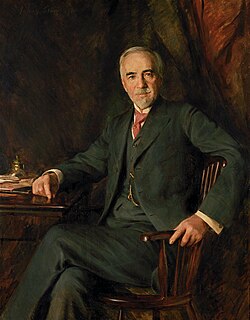
William Hood Dunwoody was an American banker, miller, art patron and philanthropist. He was a partner in what is today General Mills and for thirty years a leader of Northwestern National Bank, today's Wells Fargo.

George Gotthilf Eitel was an American surgeon who designed and built Eitel Hospital in Minneapolis, Minnesota, in 1912. Eitel was its chief of staff for fifteen years until 1927, after which he was called proprietor.






















